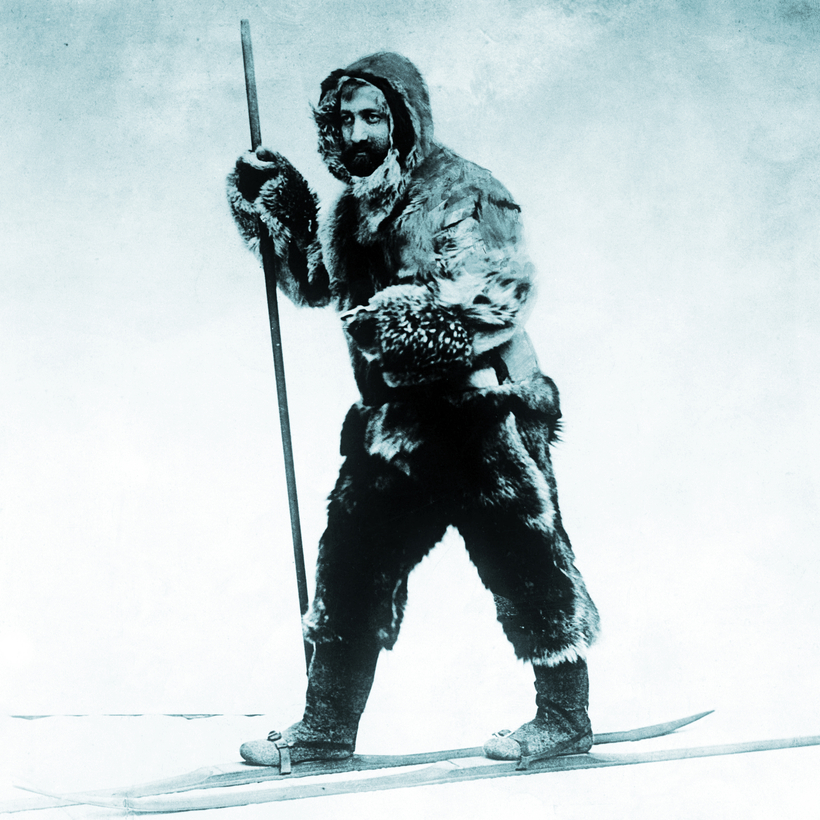In the fall of 1909, American newspaper readers were plunged into confusion and rancor over what should have been an exciting piece of news. An American explorer had emerged from the Arctic, claiming to have reached the North Pole, the first person ever to have achieved the feat! The problem? More than one American man was making the claim.
First, at the beginning of September, came Frederick Cook, whose 2,000-word account of a successful polar mission briefly dazzled the world when it ran exclusively in The New York Herald. Then, a few days later, the revered adventurer Robert Peary, whose own, separate polar expedition had been backed by The New York Times, sent word that the “Stars and Stripes” had been “Nailed to the Pole.” In his account, Peary had been the one to do the figurative nailing.

Neither man claimed to have seen any trace of the other at the Pole. Before long, they were engaged in a bitter dispute that would cast a permanent cloud over the simple question of who exactly was the first person to stand at the top of the world.
Neither man claimed to have seen any trace of the other at the Pole.
The journalist Darrell Hartman explores that feud in his exciting and impressively researched new book, Battle of Ink and Ice. Paying as much attention to the ambitious publishers who promoted Cook and Peary as to the explorers themselves, Hartman convincingly portrays the North Pole saga as a product of the early-20th-century media wars, a golden age of newspapering when, in the words of one foreign journalist, Americans “would consider themselves defrauded if they did not have a bale of printed matter delivered at their doors” on Sundays “almost equal in bulk to a family bible.”
Of the two explorers, Peary was the better known in his day and, by all appearances, far more loathsome. His Arctic dreams were born of an uncommon hunger for glory. (“Remember,” he wrote to his mother as a young man, “I must have fame.”) Planning an earlier Arctic expedition, he allotted half the food for his return trip by sleigh as he’d need for the outbound course. His theory, Hartman writes, was that on the return “the dogs could pull lightened loads and be slaughtered and fed to each other.”

Learning of Cook’s competing North Pole claim on his return to civilization in 1909, Peary set to work tearing it apart. He had the help of the Times, an emerging media powerhouse that had helped fund Peary’s expedition and published an account of it in its pages. Cook, by all appearances an incorrigible fabulist, was easy prey. Arctic experts began to question his polar claim when he offered only hazy details of his journey and refused to submit his trip logs to independent examination by American experts. He doomed himself by going into hiding as more and more doubts about his account arose.
The one thing Cook had going for him was the support of the Herald, the most profitable newspaper of the day, whose owner, James Gordon Bennett Jr., ruled over its Midtown Manhattan newsroom from splendid exile in Paris. (The publisher, said Teddy Roosevelt, “has one redeeming feature: He lives abroad.”) Having milked profits from earlier exotic adventures—most notably when he sent the journalist Henry Morton Stanley in search of the lost explorer David Livingstone—Bennett was willing to endure controversy in the promotion of a Herald exclusive.
A golden age of newspapering when Americans “would consider themselves defrauded if they did not have a bale of printed matter delivered at their doors” on Sundays “almost equal in bulk to a family bible.”
But he was thwarted by the Times and its ascendant owner, Adolph Ochs, paterfamilias of the Ochs-Sulzberger clan, which still controls the paper today. In the age of yellow journalism, Ochs wanted the Times to be seen as the paper of quality. An ad campaign boasted that NO WOMAN IS EVER ASHAMED TO BE SEEN READING THE NEW YORK TIMES IN PUBLIC PLACES. In this maneuvering, Bennett rightly perceived a threat to his upmarket Herald.

The Times pressed its advantage in the fall of 1909 by obliterating Cook’s account. This effort, the paper claimed, was driven not by its business relationship with Peary but by a selfless devotion to the pursuit of truth. (As Hartman shows, these protests were undermined by the efforts of a top Times editor to keep Peary closely informed on the state of the paper’s anti-Cook campaign.) The Times triumphed, first over Cook and, in time, over the Herald. But its boosting of Peary, who many scholars now believe also failed to make it to the Pole, is an unpleasant footnote in the proud story of the Ochs-Sulzberger reign.
Will contemporary readers see in this saga “the making of modern media,” as Hartman’s voguish subtitle promises? I guess. But the pleasure of the book is its conjuring of a now vanished print culture.
Today, we have spiffy newsletter empires whose tidy bullets of analysis offer subscribers the chance to “Be Smart” or “Know More.” Often, it seems the imagined readers of these publications have no greater aspirations than producing a well-balanced portfolio or well-credentialed offspring.
Hartman’s book conjures an age when newspapers went to the earth’s far edges in search of stories that evoked deep longings of the soul. The pursuit of those stories brought great risk and sometimes great disgrace. But when readers heard that heavy bale of paper hit their doorstep, they knew that a chance at genuine wonder might be staring up at them from the front page.

Jonathan Darman is the author of Becoming FDR: The Personal Crisis That Made a President


